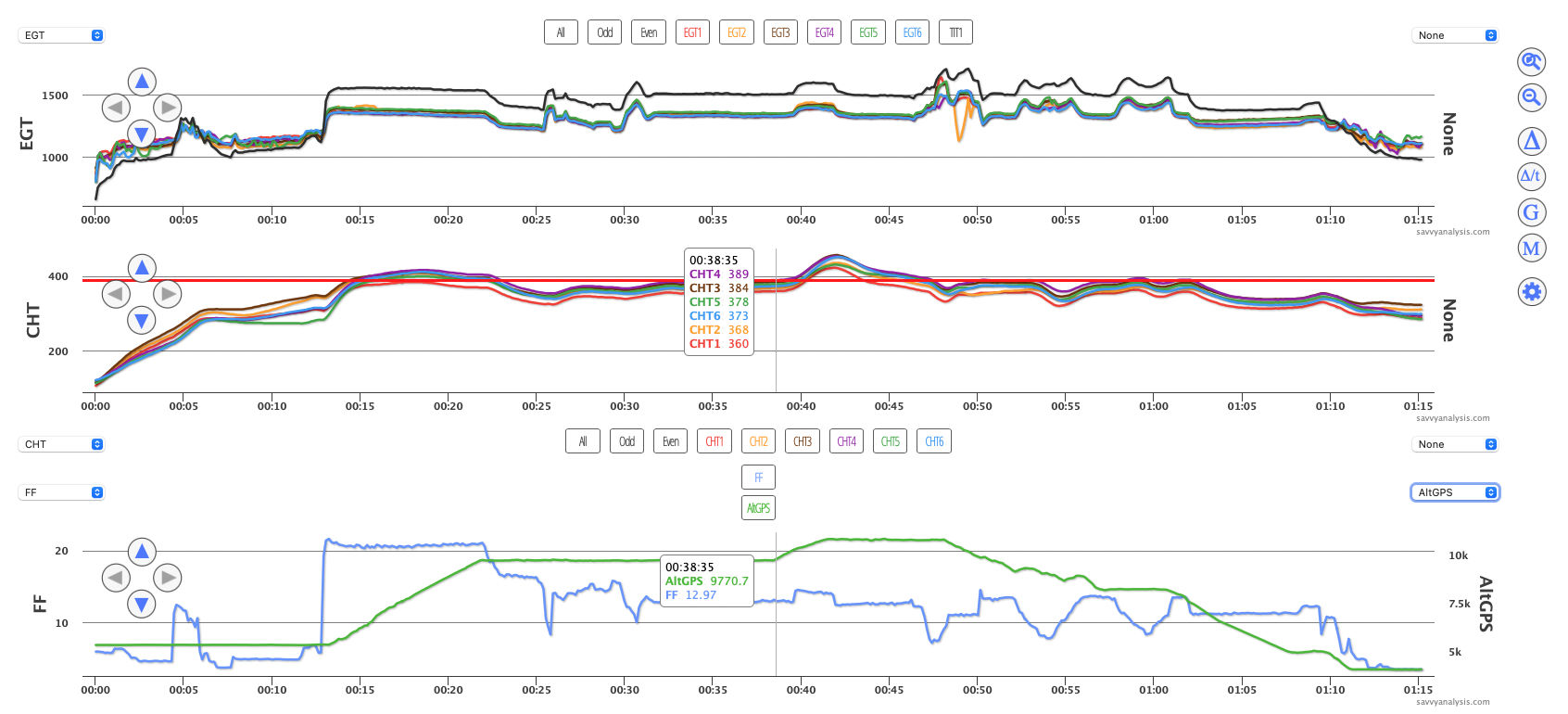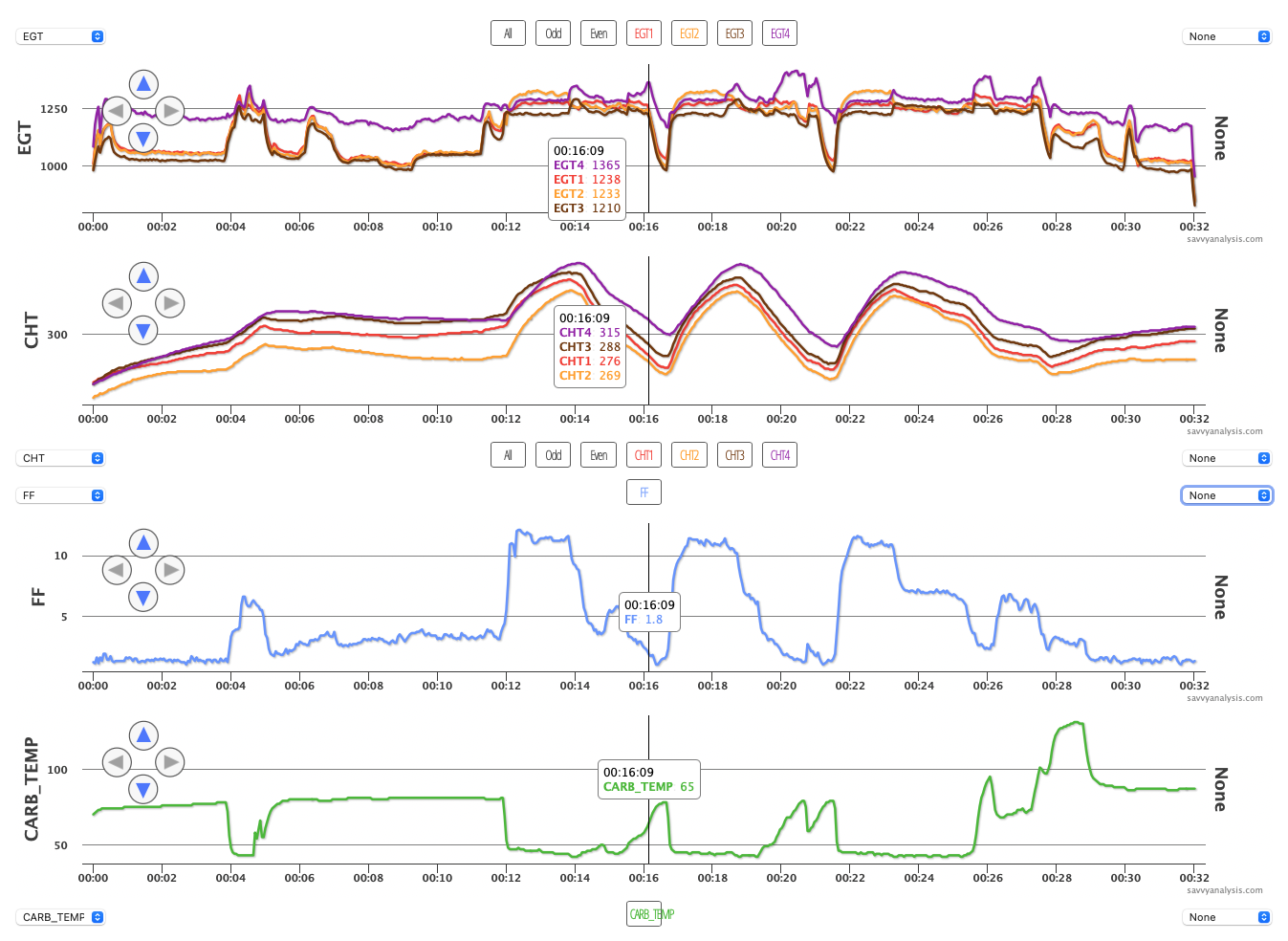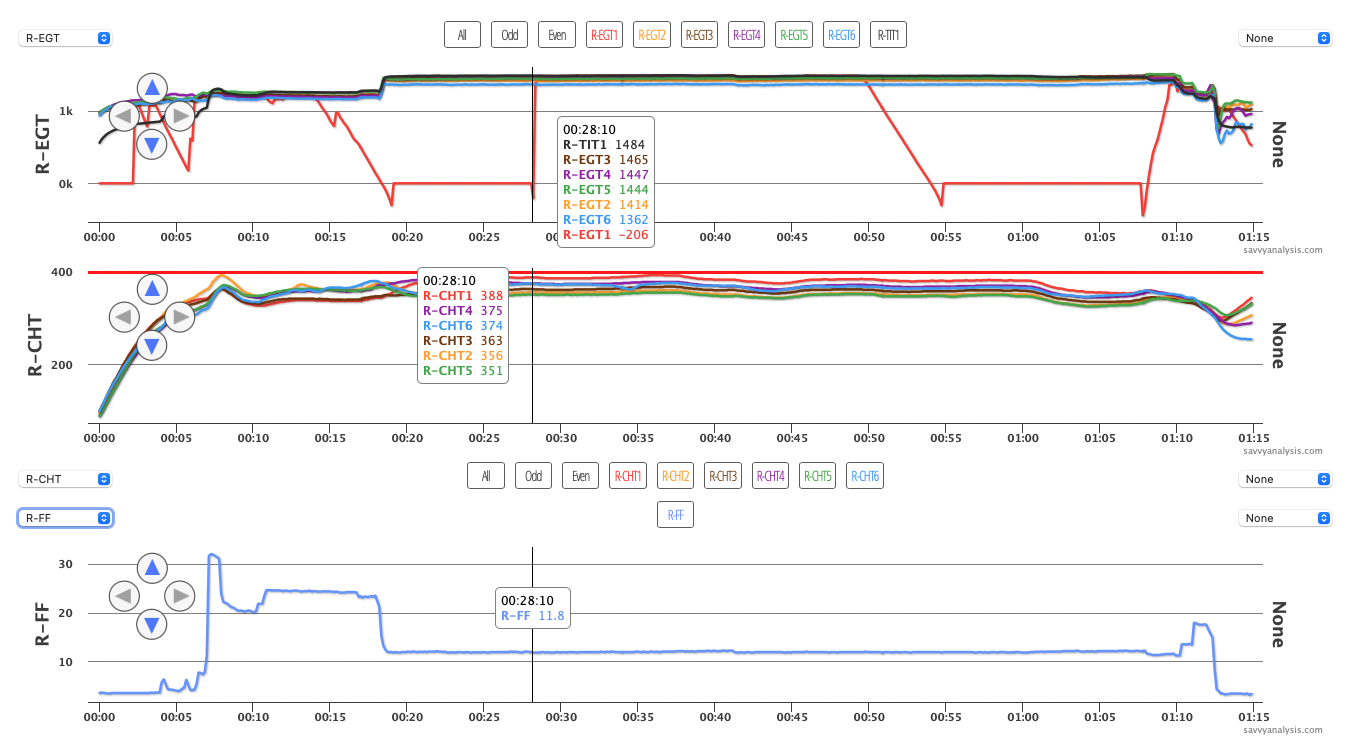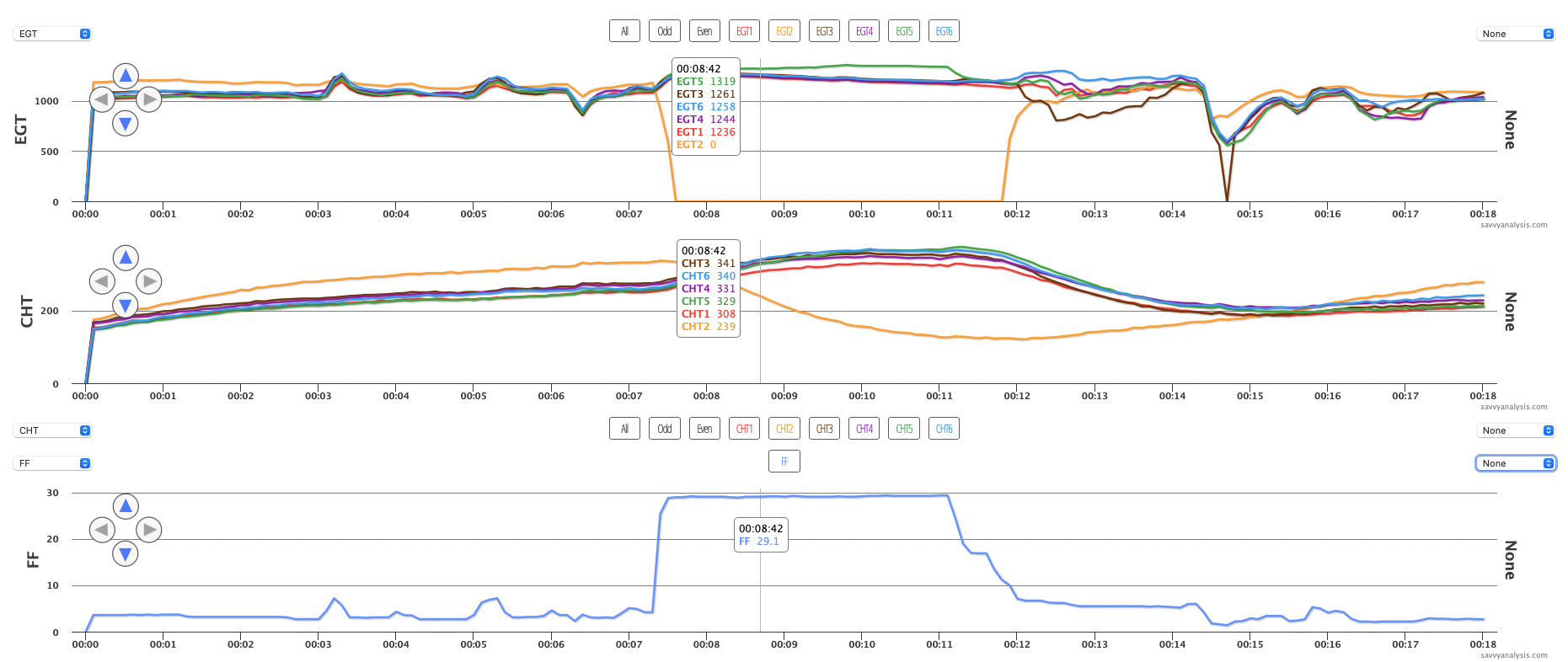I heard a weathercaster dig up the old “In like a lion, out like a lamb” line recently in reference to the weather in March. As I write this we don’t know if this year’s “out” will be a lamb or something more fierce. But it got me thinking about airplanes named for animals. We’ve got Mustang, Beaver, Camel, the F-14 Tomcat and its whole Grumman family of cats, and then a long list of birds from the SR-71 Blackbird and the F-16 Falcon to the Skyhawk and the Swift. And the Gypsy Moth.
Sometimes when we suspect a failure of an EGT or CHT probe we wish it went out like a lion. One last big roar and then o wim o weh o wim o weh – the lion sleeps tonight. More often we see a lamb-like baaaaa that’s either distracting to the pilot in real time or confusing to the analysts looking at the data. Fortunately, from an employment perspective, we’re happy that it still takes the human animal to put the data in context and draw meaningful conclusions. And it gives me something to write about every month. So let’s get started.
We’ll start this month with data from a 2004 Cessna T182 with a Lycoming IO–540 engine and data from a Garmin G 1000 with a one sec sample rate. I typically don’t list the year of manufacture, but with Cessnas it’s nice to know if it’s a legacy model or a restart model. EGTs on top, then CHTs, and FF and GPS ALT together.

I put the cursor or the beginning of the enroute climb from 9500 to 10500. The map data (not shown to maintain the privacy of the data) shows a course reversal so it looks like the pilot was conforming his altitude to the heading. After getting the power settings set up in cruise, it’s tempting to try and squeeze another thousand feet of climb by trading airspeed for pitch. I know that I’ve tried it. In this case cruise starts at about 22 mins and includes a couple of FF tweaks, then at 38 mins the climb starts.
Just to the right of the cursor you can see an increase in FF, maybe because the pilot saw CHTs starting to rise. But that small increase in FF just takes it from LOP to slightly less LOP. FF was around 21GPH at takeoff and even that sent CHTs into the 400º neighborhood. So the increase from 13 to about 14.5 just isn’t enough to offset the cooling lost in the climb and CHTs get hot. 421-456º are the high readings, which is about 60º higher than when the climb started. So next time you’re tempted to “zoom climb” a little higher keep an eye on your CHTs. You might get away with that in a lamb-like Spring, but maybe not in the dog days of summer.
Next up is data from a Zenith CH2000 with a Lycoming O-235 engine and data from a JPI 900 with a 1 sec sample rate. Four ranks this time – EGT, CHT, FF and carb temp.

The question was why is EGT 4 sometimes much higher than the others. If you just look at EGT and FF, there’s a pretty good correlation. Adding carb temp adds another dimension. We know adding carb heat disrupts the air flow of a carbureted engine, and in this case it’s causing a lean mixture — the first 12 mins and the taxi-backs at 16 and 22 mins — to be extra lean.
The EGT spread at full power is pretty good, with EGT 2 being hottest while CHT 2 is coolest. That could be weak spark, while cyl 4 looks more like a fuel/air issue. We also noticed that until the last approach around the 26 min mark, peak carb temp was in the 70-80º range, then it jumps up into the 90-100º range. Maybe it’s just the effect of cumulative heat, or maybe the carb heat control got moved a little further, maybe because the weak spark of cyl 2 get interpreted as carb ice and the pilot wanted more of it.
Let’s honor the 3rd month with data from a Cessna 303 Crusader with Continental TSIO-520 engines and data from a Garmin G500 with a 1 sec sample rate. This is the right engine only – EGT, CHT and FF.

Hopefully the pilot was watching the G500 at engine start and saw the EGT 1 value of zero. If he was, then the drop right before takeoff and the subsequent drops at 14 and 50 mins wouldn’t be so shocking. It’s one of the stranger failure modes we’ve seen – zero, then a couple of quick drops, then normal in initial climb, then a slow decline past zero to negative 200 something, then zero, then negative then normal, all of which repeats thirty-some minutes later.
Is that slow decline over 5 mins better or worse than an instant drop? It’s a lesser of two evils scenario but I’d probably opt for the quick hit vs the long good bye. Either way you have to laugh a little when your engine gives you negative EGT values. Cue the Twilight Show music…
We’ll finish March with a Cirrus SR-22 with a Continental IO-550 engine and data from an Avidyne Entegra with a 6 sec sample rate. EGT, CHT and FF. I hope your spidey-sense is warmed up because you’ll need it for this puzzle.

This is a 2003 G1 which got a zero-time factory reman IO-550. This is the first flight with that engine. The pilot reported “the ground check seemed normal but on climb out and orbiting the airport at 75% power, CHT 2 decreased and EGT2 was low. The engine was slightly rough.”
Let’s start at the left of the chart. EGT and CHT 2 are a little high taxiing out, so it might be a clogged injector depending on what we see with higher FFs. That gets answered pretty quickly when max FF of 29 GPH sends EGT 2 to zero and CHT 2 diving. Zero is weird for an EGT value because even with poor combustion – or even if there’s catastrophic failure – we’d expect to see at least ambient temp. Not zero for 4 mins. But a failed EGT probe or connection wouldn’t send CHT 2 lower and cause engine roughness. It’s a new engine so looking at previous data does us no good.
Cyl 2 roars back to life – well, at least it starts firing again – after FF is reduced. That has us focused on FF, like maybe an issue with the fuel spider. But zero EGT? That almost sounds like a valve isn’t opening at all. But shouldn’t we at least get whatever ambient temp was that day? As we pondered the possibilities we got an update from the shop who installed the engine.
This airplane has an oil/air separator which connects to one of the cyl 2 pushrod tubes. It appears that when the “new engine” pushrod was removed, the lifter was on the high point of the cam lobe, and the lifter wasn’t bled down – collapsed – before the “old engine” pushrod with the required fitting went on. So in a sense it was a sticky valve. If that valve was being held open at the wrong spot in the combustion cycle, it could have impacted the piston and led to a very unpleasant and expensive break-in flight.